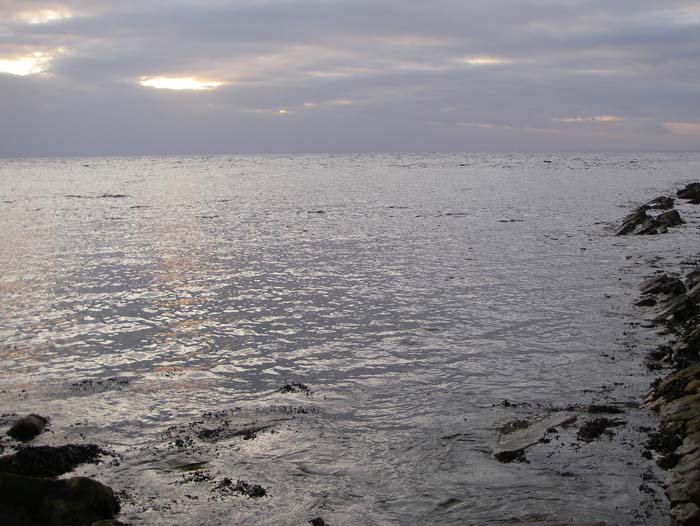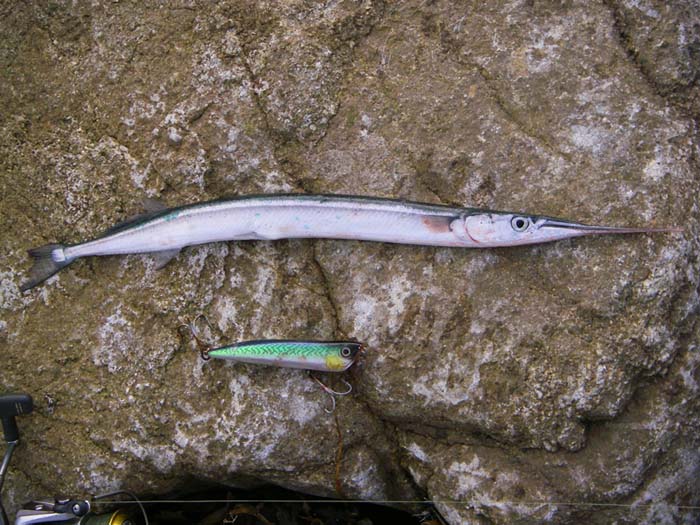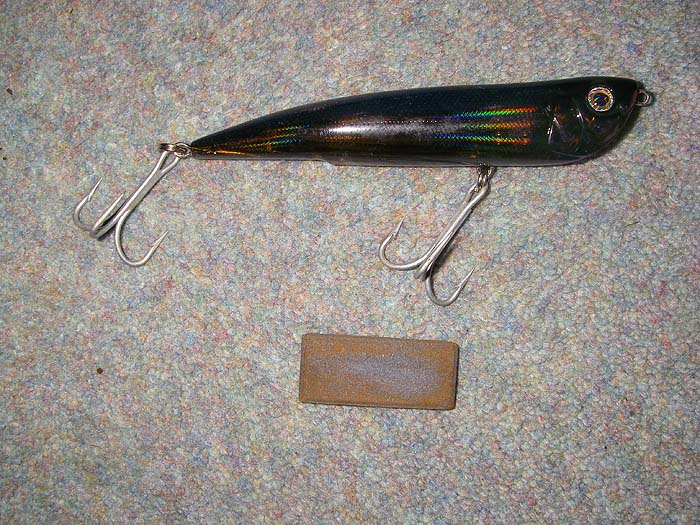

Catch Fish with
Mike Ladle
Information Page
SEA FISHING
For anyone unfamiliar with the site always check the FRESHWATER, SALTWATER and TACK-TICS pages. The Saltwater page now extends back as a record of over several years of (mostly) sea fishing and may be a useful guide as to when to fish. The Freshwater stuff is also up to date now. I keep adding to both. These pages are effectively my diary and the latest will usually be about fishing in the previous day or two. As you see I also add the odd piece from my friends and correspondents if I've not been doing much. The Tactics pages which are chiefly 'how I do it' plus a bit of science are also updated regularly and (I think) worth a read (the earlier ones are mostly tackle and 'how to do it' stuff).
12 November 2007
Poor hooking. How do they do it?
My last couple of trips have been plagued with lots of strikes and very few fish hooked. Anyone who has done much spinning must have wondered how, after a fierce pull on the rod and a yard of line ripped off the clutch, some lucky fish has still managed to avoid the clutches of a couple of razor sharp trebles. I know that I've often been amazed by a series of 'missed bites'. Usually, after a particularly vicious yank I wind in the lure and inspect the hooks. Occasionally my inspection reveals that a treble has fouled on a split ring or that a scale has masked a hook point or even that one or more of the hooks was less than perfectly sharp but usually there is no flaw in the gear.
The other things that could cause missed takes are faults in the set up or use of the tackle. For example if the rod was too soft in its action, if the clutch was set too lightly, if there was too much stretch in the line or perish the thought, if I've given a bit of slack line at the wrong instant.
How can you minimise the chances of failing to hook 'takers'? Well the first thing is the tackle. The rod should be reasonably stiff in its action - not necessarily a broom shank or a billiard cue but certainly not floppy like the old glass fibre implements. The reel should have a decent clutch and this should be set so that it only yields line under pressure. This can only be done if the line is strong enough to withstand a fairly sudden shock. In the old days I used to spin for bass with eight pound BS nylon monofilament and with the clutch set to about four pound pull this was fine for sub-surface plugs and spoons. However, these days I fish (with my 'bass' tackle) for bigger fish in the tropics and I use large surface popping lures which are often armed with fairly hefty trebles. To sink these hooks home it is best to have a bit more resistance when the fish takes. This can easily be achieved with stretch-free braided line. These lines are exceptionally strong and thin so they do not restrict casting. If you want you can put a leader of 15-25lb nylon on the end of the braid as a sort of rubbing trace, this may be less visible to the fish (although I doubt it) and protects the business end of the braid from hook damage. Braid also provides instant contact and largely compensates for the slack line that may occur with stop-start movement of popping lures. This can also be helped by using the reel to pop the lure rather than jerking the rod.
So much for the gear in your hand but what about the lures themselves? As a rule small, fine-wire hooks are easier to embed than big ones. On the other hand if the body of the lure is bulky the hooks need to be wide enough in the gape to project beyond its profile. Barbs also prevent hooks from penetrating but I haven't got the nerve to go barbless so I often reduce the size of the barbs or flatten them a bit. Perhaps the most important thing you can do is to make sure that the hooks are as sharp as possible. To test this, put the point of each hook on your thumb nail and slide it across - it shoud dig in. If it doesn't it's not sharp enough. Get out the sharpening stone and give it a few strokes until it bites on your nail.
Of course whatever you do you will sometimes miss fish. Some species are just particularly difficult to hook. For example the beaks of garfish don't give much of a hook hold and the small mouths of wrasse can't easily absorb a big hook. Small fish will often attack large lures without contacting a hook and squid or cuttlefish seem to be able to grab lures with impunity. There's not much you can do about these problems although, if you suspect you know the culprit you could change your tactics to suit (eg floatfish for the gars, put a small treble on the tail of the lure for wrasse and use a proper jig for the squid).
If you have any comments or questions about fish, methods, tactics or 'what have you.'get in touch with me by sending an E-MAIL to - docladle@hotmail.com
Flat calm.

Small gar, big lure.

Close up.

Sharpener.
